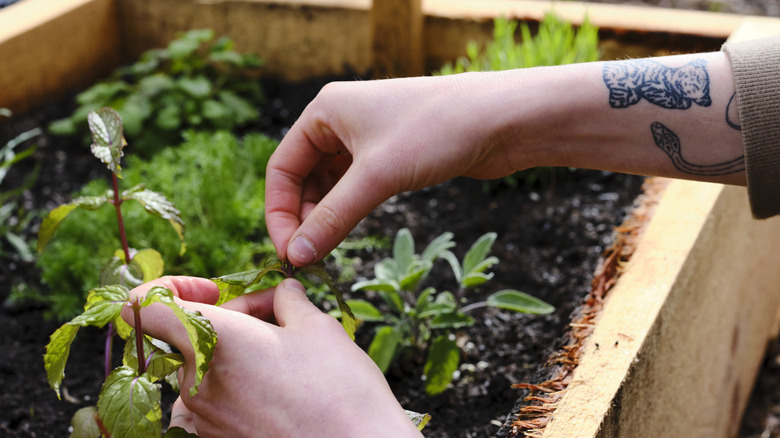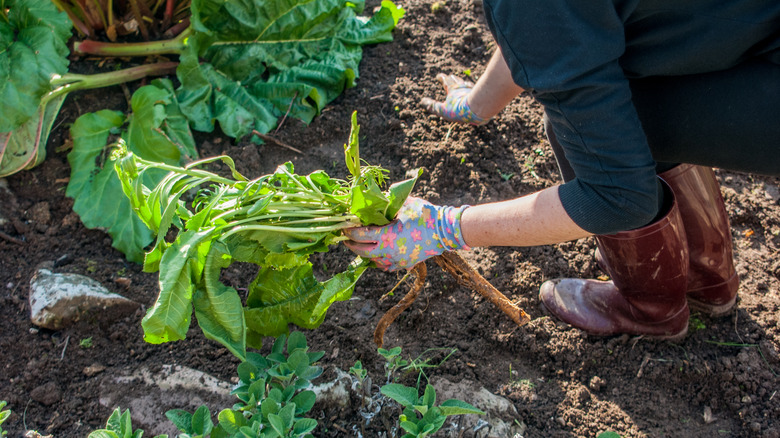The One Herb You Should Be Cautious About Growing Near Other Plants In The Garden
Sometimes selecting herbs for your herb garden is about treating your tastebuds, but sometimes, it's about what you feel like you can grow most reliably. When you're choosing which herbs to plant, an herb that's delicious, doesn't need much care, and doesn't have many pests might sound like a good idea. But as it turns out, these properties can lead you to an aggressive herb that you should avoid growing too close to other plants in your garden: horseradish.
Horseradish is scientifically known as Armoracia rusticana and thrives in USDA hardiness zones 2 through 9, which encompass most of the U.S. Both its taste and its ability to spread aggressively come from its roots. They grow from a central root crown and spread deep into the soil, which makes horseradish difficult to get rid of since it can regrow from even the smallest piece of root. As it proliferates, horseradish can start to outcompete most of the other plants in your garden for nutrients, which can negatively affect their health.
Though you might sometimes see horseradish's growth described as "invasive," it's not technically considered an invasive species in North America. While it may not be native to the U.S., falling under that term would mean it's also causing harm to the environment and/or humans. It's a fast-growing herb that can commandeer your garden, but that's not enough to earn the "invasive" label.
How to prevent horseradish spreading
To keep horseradish from running amok in your garden, don't plant it uncontained in open soil. You'll need a physical barrier to prevent the roots from spreading too far, which can be a plastic or metal barricade in the planting area that extends 12 to 18 inches underground. An easy way to DIY this is to cut out the bottom of a large plastic tub and bury it where you intend to plant horseradish.
If creating an in-ground barrier isn't your speed, you can also keep horseradish in a raised bed or container as long as it's at least 18 inches deep; while roots proliferating too far can cause an overgrowth problem, not giving them enough room to grow makes for an unhealthy horseradish plant. If you want to incorporate other herbs and get extra creative, you can even DIY a topiary planter to control fast-spreading herbs.
When it's time to harvest your horseradish, make sure to extract the entire root, including the branches. Ideally, this is done when the plants are dormant in the late fall or early spring since this makes the roots less likely to spread. And if your horseradish is planted with only an underground barrier for the roots, avoid tilling up its soil — you might accidentally spread root pieces across the garden and render your containment techniques useless.

